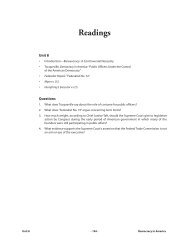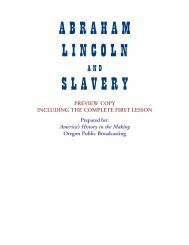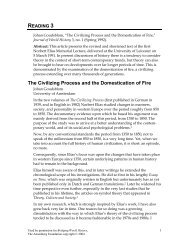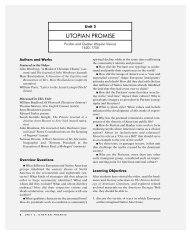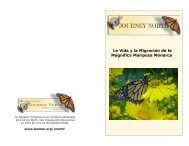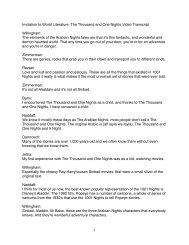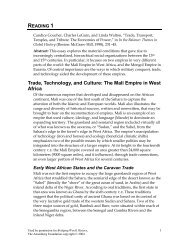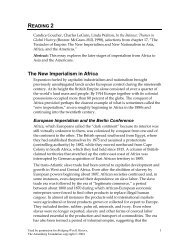You also want an ePaper? Increase the reach of your titles
YUMPU automatically turns print PDFs into web optimized ePapers that Google loves.
Thus, a constellation of imperial, political, and economic events<br />
systematically helped shrink Asian markets for Kashmiri shawls in the<br />
nineteenth century. British policies within the Muslim Empires of Eurasia<br />
diminished demand by eliminating many indigenous rulers, and limiting the<br />
financial resources of others. After 1858, when the British Crown took over<br />
direct rule of colonial India, government officials continued to intensify their<br />
promotion of British manufactured products in substitution for the<br />
manufactures of the Subcontinent. The nationalist movement, however,<br />
worked to reverse this trend and to promote indigenous textiles of all kinds<br />
in the early twentieth century. Independent India and Pakistan both claimed<br />
Kashmiri shawls as their indigenous commodities and promoted their sale in<br />
Europe and the United States in the second half of the twentieth century.<br />
Representations of Kashmiri Shawl Weavers<br />
Nineteenth-century British anthropologists and folkorists claimed intellectual<br />
and cultural authority over the peoples and handicrafts of colonial India,<br />
including the right to use Eurocentric norms to judge their designs and<br />
production methods as “authentic.” Colonial rhetoric abstractly<br />
“legitimize[d] or delegitimize[d] actual people and communities” at the same<br />
time that workers served as “a merchandising device in the marketplace” for<br />
their own handicrafts (Root 1996, 78–81; Maskiell 1999). European consumers<br />
of Indian textiles could observe production of Kashmiri shawls and other<br />
South Asian textiles already selected as authentic at European and American<br />
world’s fairs and [End Page 52] industrial exhibitions (Hoffenberg 1993, 50–<br />
54). Furthermore, the new European department stores pioneered lavish<br />
merchandise displays which emphasized the authenticity of their Indian<br />
commodities. For example, in 1885 Liberty’s of London showcased Indian<br />
textiles by creating an Indian village at the Albert Palace in Battersea Park,<br />
complete with a “contingent of Indian natives” to display their skills as “silk<br />
spinners, saree weavers, Bigapoor carpet weavers, embroiderers, inlaid box<br />
makers, furniture carvers, Poonah figure makers and dressers, [and] beetle<br />
wing embroiderers.” These “natives” were accompanied by other craftsmen<br />
and “entertainers,” including “a dancing boy, a snake charmer and juggler, a<br />
singing and dancing master, knife juggler, dancing girls [and] acrobats”<br />
(Adburgham 1975, 60). Although this Indian village apparently was the only<br />
exhibition for which the firm imported people as well as arts and crafts, the<br />
shop specialized in creating other spectacular displays for charity bazaars,<br />
fancy balls, and art exhibitions, including one with “a complete Japanese<br />
house” (61). Thus, the authenticity of Liberty’s merchandise was supposedly<br />
guaranteed through the expensive, elaborate, and exotic settings prepared to<br />
showcase their wares.<br />
Used by permission for Bridging World History, 20<br />
The Annenberg Foundation copyright © 2004



